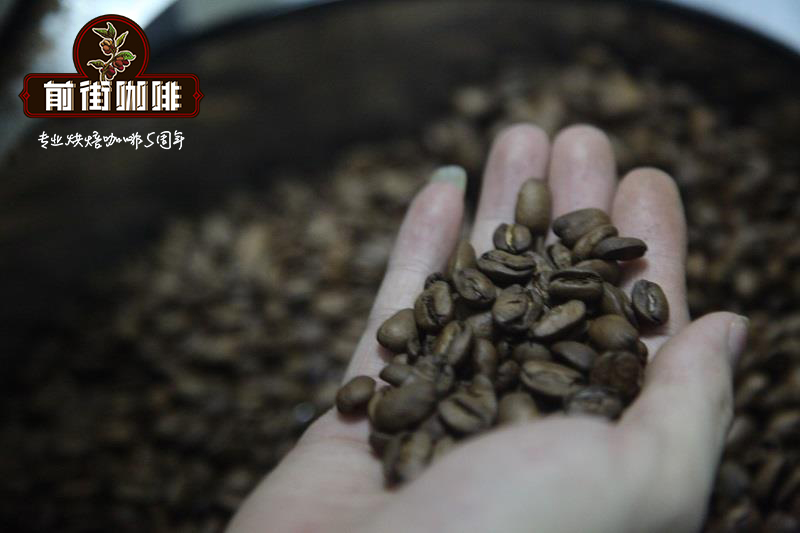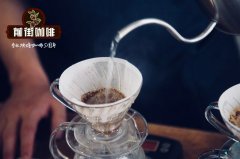The characteristics of Brazilian coffee beans what is the roasting degree of Brazilian coffee beans? Brazilian coffee bean treatment

Professional coffee knowledge exchange more coffee bean information please follow the coffee workshop (Wechat official account cafe_style)
The characteristics of Brazilian coffee
Brazilian coffee generally refers to coffee produced in Brazil. There is a wide variety of Brazilian coffee, the vast majority of which are unwashed and sun-dried, classified according to the name of the state of origin and the port of transport. Brazil has 27 states and 17 states produce coffee, but four of them produce the largest, accounting for 98% of the country's total output. The taste of Brazilian coffee beans has a low sour taste, with the sweet and bitter taste of coffee, the entrance is very smooth, but also with a hint of grass aroma, slightly bitter in the fragrance, smooth and smooth, with a pleasant aftertaste.
Brazilian coffee beans are low-acidity, moderately roasted coffee beans from the World Coffee Center. As a kind of high-quality coffee, Brazilian coffee can be drunk individually or mixed.
Superior quality beans: Sangduo NO.2, size NO.18
Taste characteristics: mild, bitter medium, soft aroma.
The best degree of fried culture: medium fried culture
The taste of Brazilian coffee has a low sour taste, with the sweet and bitter taste of coffee, the entrance is very smooth, but also with a hint of grass aroma, slightly bitter in the fragrance, smooth and smooth, with a pleasant aftertaste. There are no outstanding advantages for Brazilian coffee, but there are no obvious defects. The taste is mild and smooth , low acidity, moderate mellow, and a touch of sweetness. All these soft flavors are mixed together. To distinguish them one by one is the best test for taste buds. This is also why many Santos fans love this kind of coffee. It is precisely because it is so mild and ordinary. Santos is suitable for ordinary baking, suitable for brewing in the most popular way, and is the best raw material for making Italian espresso and all kinds of fancy coffee.
One of the most famous is Sandos Coffee, which tastes mellow and neutral. It can be boiled directly or mixed with other kinds of coffee beans to form a comprehensive coffee. It is also a good choice.
Other kinds of Brazilian coffee, such as Rio and Parana, can be produced in large quantities because they do not require too much care. Although the taste is rough, it is a kind of high-quality and inexpensive coffee, which has its own standards because it is distributed all over Brazil and varies in quality (NO.2--NO.8 according to the number of sundries, NO.13--NO.19 according to the size of beans, and six grades according to taste). Almost all Arabica varieties are of good quality and stable in price. The most famous one is "Brazil Santos", which has been a necessity of blended coffee and is familiar to the public since ancient times. Recently, the "Guilma Cup" is also highly rated.
Brazilian coffee bean treatment
Brazilian coffee has sun, half-sun and water washing methods at the same time, and the judgment method is mainly based on the dry and humidity conditions of the farms of each producing area, thus showing the best flavor of each producing area, which is very diverse!
But why do most people still think that Brazil is dominated by solarization?
The main reason is that before 1990, rough solarization was adopted almost all over Brazil, which made the raw beans of Brazilian coffee easy to have the taste of soil and wood, which made the raw beans of Brazil poor in quality and tarnished the image.
However, after 1990, Brazil developed the half-sun method, which not only shortens the working time, increases the fruit aroma and sweetness, but also reduces the chance of coffee beans catching peculiar smell. The quality is improved a lot, and it is very suitable for brewing coffee as a single product.
What kind of treatment should be used depends on the local humidity conditions. Manors everywhere will use the best way to reduce the growth of mold to deal with coffee beans!
Important Notice :
前街咖啡 FrontStreet Coffee has moved to new addredd:
FrontStreet Coffee Address: 315,Donghua East Road,GuangZhou
Tel:020 38364473
- Prev

Introduction of Brazilian coffee beans description of taste and flavor of different treatments of Brazilian coffee beans
Professional coffee knowledge exchange more coffee bean information please follow the coffee workshop (Wechat official account cafe_style) as Brazil is located in the tropical rain forest region, the terrain is relatively flat with few high-altitude mountain forests, most coffee is grown in low-altitude non-volcanic soil areas, and there is not much shade for shade, resulting in the rapid growth rate of Brazilian beans, large beans but dense coffee.
- Next

The principle of hand-brewing coffee recommends the brewing method.
Professional coffee knowledge exchange more coffee bean information Please pay attention to the coffee workshop (Wechat official account cafe_style) people who just know hand-brewed coffee are often frightened by a dazzling array of utensils and precautions, just filling kettle and filter cup do not know where to start. In fact, different hand conditions have their advantages and disadvantages, and everyone's preferences are also different, compared to comparing different specialties around.
Related
- Detailed explanation of Jadeite planting Land in Panamanian Jadeite Manor introduction to the grading system of Jadeite competitive bidding, Red bid, Green bid and Rose Summer
- Story of Coffee planting in Brenka region of Costa Rica Stonehenge Manor anaerobic heavy honey treatment of flavor mouth
- What's on the barrel of Blue Mountain Coffee beans?
- Can American coffee also pull flowers? How to use hot American style to pull out a good-looking pattern?
- Can you make a cold extract with coffee beans? What is the right proportion for cold-extracted coffee formula?
- Indonesian PWN Gold Mandrine Coffee Origin Features Flavor How to Chong? Mandolin coffee is American.
- A brief introduction to the flavor characteristics of Brazilian yellow bourbon coffee beans
- What is the effect of different water quality on the flavor of cold-extracted coffee? What kind of water is best for brewing coffee?
- Why do you think of Rose Summer whenever you mention Panamanian coffee?
- Introduction to the characteristics of authentic blue mountain coffee bean producing areas? What is the CIB Coffee Authority in Jamaica?

